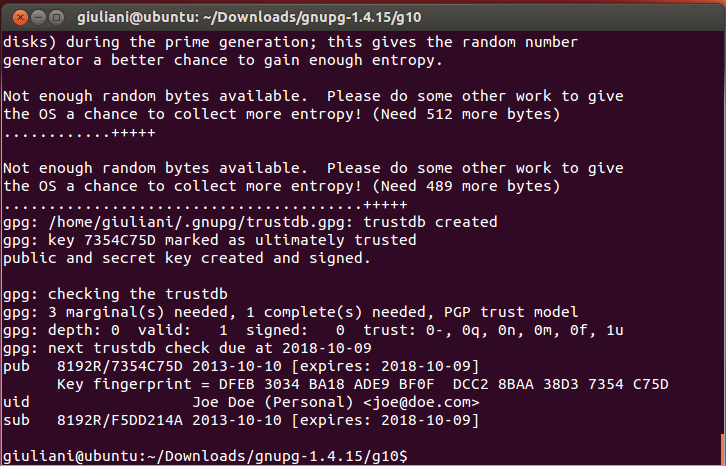

- #Gnupg mac find name of already imported key how to#
- #Gnupg mac find name of already imported key archive#
- #Gnupg mac find name of already imported key full#
- #Gnupg mac find name of already imported key software#
- #Gnupg mac find name of already imported key download#
You can then right-click on it -> Send Public Key to Keyserver. If you already have a keypair then you can import it by clicking the Import button.

You will see your newly created key in the GPG Keychain. The keyserver will send you an email asking you to confirm the upload. This will allow others to find it using your email address so that they can send you secure PGP-encrypted emails.ĭo please be aware, though, that once a public key is uploaded to a keyserver it cannot be deleted. You can leave the Advanced options alone or play with them as you please. Open the GPG Keychain app, select New (the + sign) and fill in the relevant details. During installation, stick with all the default settings.
#Gnupg mac find name of already imported key download#
This is a one-off fee, but you do need to pay again for new versions as they are released.ĭo please make sure to verify the download before installing it. GPGTools is free, but the GPG Mail plugin for Apple Mail is designed to help fund the open-source project and costs $22. Since GPGTools 2018.2, however, this vulnerability has been patched. It is worth noting that in 2018 GPGTools make headlines due its vulnerability to the EFAIL attack which affected all versions of PGP at the time. GPG on its own is a basic command-line tool, but GPGTools for macOS provides a GUI interface and advanced features. The most common implementation of OpenPGP is Privacy Guard (also known as GnuPG or just GPG). Secure Privacy Email Options 2022 Method 2: GPGTools with GPG Mail
#Gnupg mac find name of already imported key full#
Please check out our full Mailvelope How-to guide for a detailed look at how it works. Mailvelope is a free and open-source browser extension for Chrome and Firefox that makes using PGP on your Mac about as easy as PGP is ever likely to get. To combat this, we will show you the two easiest ways to use PGP on your Mac: Method 1: Malivelope So once keys for one encrypted email are broken, all other emails encrypted using the same keys will also be compromised.Īrguably the biggest problem with PGP, though, is that it's just not very easy to use, with the result being that most people simply don’t. Just the body text and any attachments.Īnother problem with PGP is that it does not use Perfect Forward Secrecy (PFS). When PGP is used to secure emails, the metadata - such as email addresses of both the sender and recipient, date and time of sending, and e-mail’s subject line - is not encrypted.
#Gnupg mac find name of already imported key software#
This is an open-source 100% compatible clone of the original PGP, which is now closed-source software owned by Symantec. When discussing PGP these days we almost always mean OpenPGP.
#Gnupg mac find name of already imported key how to#


It can also be used for signing and encrypting all sorts of other stuff but is mainly used to secure emails. With 30C18A2B being the key-id from the list.PGP does have a number of issues (discussed below), but it is still the most widely used email encryption system, and therefore the most interoperable with others no matter which platform or email service they use. The linked answer also shows that you can remove the key if needed, using: sudo apt-key del 30C18A2B
#Gnupg mac find name of already imported key archive#
Uid Opera Software Archive Automatic Signing Key 2013 This will list the keys added and the key from Opera should be listed on the bottom like this: pub 1024D/30C18A2B Now to verify that it worked, run this command (from this answer): apt-key list So it basically downloads the key and then adds it in one command.


 0 kommentar(er)
0 kommentar(er)
